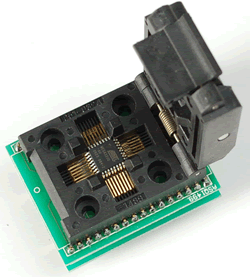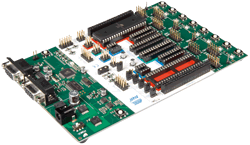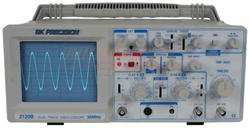| TEI4M Micro Projects |
Below is a set of micro projects (1 - 2 hours?) I recommend you consider undertaking. They're not for credit but one or more should appeal to your sense of curiosity as a prospective engineer. If you have a free period or so, consider taking one on. Some of these I could use your help on as they would be useful to other ACES. Futhermore, if you would like to suggest a project, let me know and I'll write it up.

![]() 10. SMD: TQFP. (Completed: J. Russett, September 18) In addition to the DIP-28 package, the ATmega328P also comes in a 32-pin surface mount option referred to as TQFP-32 (Thin Quad Film Package) (see p. 2). Flashing this package can be achieved through the use of a ZIF clamshell device mounted on a breakout board, convenient for use with a breadboard.
10. SMD: TQFP. (Completed: J. Russett, September 18) In addition to the DIP-28 package, the ATmega328P also comes in a 32-pin surface mount option referred to as TQFP-32 (Thin Quad Film Package) (see p. 2). Flashing this package can be achieved through the use of a ZIF clamshell device mounted on a breakout board, convenient for use with a breadboard.
We have both TQFP-32 ATmega328ps and the TQFP device in the lab's inventory. Consider undertaking this as a test case by flashing the Blink sketch using the DE of your choice.
Datasheet: Atmega328P TQFP ClamShell
ATmega328p Device Signatures:
DIP28: 1E950F
TQFP: TBA

![]() 9. STK500. Atmel's STK500 is a mature AVE Development Board, well covered within AVRDUDE's set of command parameters. I'd like someone to incorporate the STK500 as the board used to flash either an ATmega328p or ATtiny85 to confirm it can be done.
9. STK500. Atmel's STK500 is a mature AVE Development Board, well covered within AVRDUDE's set of command parameters. I'd like someone to incorporate the STK500 as the board used to flash either an ATmega328p or ATtiny85 to confirm it can be done.

![]() 8. Oscilloscope. I'd like someone to rebuild the NAND Gate Oscillator from Grade 10 and use it to demonstrate it's square wave on the Lab's Oscilloscope.
8. Oscilloscope. I'd like someone to rebuild the NAND Gate Oscillator from Grade 10 and use it to demonstrate it's square wave on the Lab's Oscilloscope.
![]() 7. Traffic Light. Write pure ANSI C code (portability) for an ATtiny85 that uses only two pins to display the three colours of a traffic light (Red, Amber, and Green). Note: I had no idea this could be achieved until yesterday (September 30, 2015) when P. Bagga showed it to me having accidentally discovered the phenomenon when working with M. Pritchard!
7. Traffic Light. Write pure ANSI C code (portability) for an ATtiny85 that uses only two pins to display the three colours of a traffic light (Red, Amber, and Green). Note: I had no idea this could be achieved until yesterday (September 30, 2015) when P. Bagga showed it to me having accidentally discovered the phenomenon when working with M. Pritchard!

![]() 5. Gecko Watch? Arguably the geekiest wristwatch I've seen, it would be an pretty impressive device to flash around Engineering Frosh week next Fall. We've got some inventory of the smaller 4-unit 7-segment display banks. Driving it with an ATtiny85 running off of a 1.6V AA? Whoa, that's getting pretty small....
5. Gecko Watch? Arguably the geekiest wristwatch I've seen, it would be an pretty impressive device to flash around Engineering Frosh week next Fall. We've got some inventory of the smaller 4-unit 7-segment display banks. Driving it with an ATtiny85 running off of a 1.6V AA? Whoa, that's getting pretty small....
![]() 3. tinyRGB. Create a new C project, tinyRGB that modifies the previous megaRGB Project to accomplish the same result using an ATtiny85.
3. tinyRGB. Create a new C project, tinyRGB that modifies the previous megaRGB Project to accomplish the same result using an ATtiny85.
![]() 1. megaRGB. Your kit contains a 4-legged CC RGB LED. Insert the leads into adjacent female headers (ie. digital pins 13-12-11-10) on your Arduino. Develop a C Project that will cycle continuously through a lighting pattern.
1. megaRGB. Your kit contains a 4-legged CC RGB LED. Insert the leads into adjacent female headers (ie. digital pins 13-12-11-10) on your Arduino. Develop a C Project that will cycle continuously through a lighting pattern.